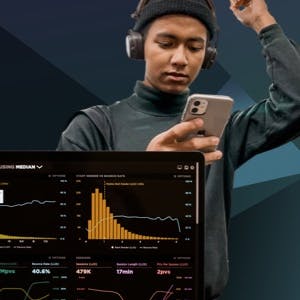- Home
- All updates
- EDGE Insights
- Industries
- Company Search
- My Watchlists (Beta)
EDGE Insights
Filter
EDGE Interview
Brian Whalley, Co-Founder of Wonderment, on Klaviyo's product-market fit
Marketing Automation
Sep 6, 2022
Older updates:
EDGE Insights
Liftoff: Funding for marketing automation scales new heights
Marketing Automation
Jan 23, 2022

Marketing Automation
Sep 6, 2022
Brian Whalley, Co-Founder of Wonderment, on Klaviyo's product-market fit
Explore more on marketing automation through our industry hub
The shift in consumer preferences toward personalization and the explosion of consumer data due to rising digital customer touchpoints have prompted startups to funnel more of their marketing budget toward automation. Brian Whalley, an early Klaviyo employee, takes a trip down memory lane to discuss how Klaviyo found product-market fit by solving a key pain point for businesses and how this helped justify its premium pricing. He highlights Klaviyo's “pre-aggregated data structure” and the strength of its integrations as key differentiators while discussing how Klaviyo solved omnichannel commerce and how it compares to other startups in the marketing tech stack. Whalley also delves into other topics including reducing dependence on paid customer acquisition and what inspired him to start his own order tracking solutions company Wonderment.

The following interview was conducted by Sacra—August 2022
Background
Brian Whalley is co-founder of Wonderment. We talked to Brian to get a better understanding of the legacy of Klaviyo and how it found product-market fit, why the post-purchase experience matters for merchants, and how cost-sensitive brands can think about lowering CAC.
Questions
- You were an early pre-Series A employee and a growth leader at Klaviyo. Can you talk about Klaviyo's early product-market fit?
- What emergent behavior did Klaviyo enable in terms of novel and effective email marketing tactics?
- How well has Klaviyo solved for omnichannel ecommerce? How would you position Klaviyo vis a vis Braze, Iterable, and Customer.io or channel specific platforms you partner with such as Attentive, ManyChat, and Postscript for a merchant looking at these products in 2022?
- Do you find that merchants would use both Klaviyo and Attentive, or is that cost prohibitive? How do folks think about that?
- What’s your advice for cost-sensitive brands who are concerned about rising CAC and looking to reduce their dependence on paid acquisition? Where should they think about making investments in their SaaS stack and marketing efforts in response to that?
- What inspired you to found Wonderment and focus on the post-purchase experience post-Klaviyo?
- You raised money from CRV. What's your shared vision on what the post-purchase experience can become? How should brands think about where the post-purchase experience is headed?
- Why is the post-purchase experience so important? Should a merchant think about it as reducing the cost of support or reducing CAC by driving customer loyalty, both or something else?
- Can you talk about how ecommerce brands are adapting to supply chain disruptions end-to-end in the customer experience, both pre- and post-purchase? What are the best practices? What aspects of the post-purchase experience, e.g., carrier analytics, can a merchant use to decrease the disruptions in getting products in the hands of customers?
- Can you talk about how being proactive in communicating disruptions with customers can drive better outcomes? Should D2C operators think of it as a way of mitigating downside and support load? What are the opportunities to delight customers and generate more loyalty?
- Wonderment integrates with Gorgias. Can you talk about what the support stack looks like for the best ecommerce business and how they design for cost effectiveness and customer satisfaction? Can you contextualize it within the use case you just described where you’re using Wonderment to drive internal preemptive notifications to avoid problems rather than be reactive?
- Wonderment emphasizes branding every customer interaction rather than sharing generic updates and alerts. Can you talk about why that's so important and how your merchants measure the impact of that?
- How should folks think about what's happening in logistics today? How can they adapt to it? Is there any evolution in the underlying tech infrastructure for it? What are the major trends in brands trying to improve their logistics?
Contact us
Gain access to all industry hubs, market maps, research tools, and more
Get a demo
By using this site, you agree to allow SPEEDA Edge and our partners to use cookies for analytics and personalization. Visit our privacy policy for more information about our data collection practices.